|
  |
|
Page 2 |
Newsletter 137 Summer 2022 © Hampshire Mills Group |
The Windmills of Sweden
Report by Ruth
Andrews of a talk given by Peter Hill to HMG's spring meeting
Photos by
Peter Hill
When the first Covid
lockdown occurred 2 years ago Peter Hill had been preparing a talk for
us entitled
The Windmills of
Sweden.
He was finally able to present it in person on Saturday 12 March 2022,
thereby becoming our first live speaker for quite a while. After the
talk, Peter Hill very kindly lent me his notes; Peter’s pictures were
all in the form of slides, so I couldn’t get digital versions for this
report. He lent us a few photos, whilst Keith and I hastily
photographed other photos from his albums, so some of the photos that
you see below are of poor quality.
Peter’s talk was based on the TIMS (The
International Molinological Society)
tour to Sweden and Finland in 1995. They visited 78 windmills and 6
watermills, starting in Stockholm and visiting the Finnish islands of
Åland and Enklinge for 3 days and the Swedish island of Gotland for a
further 3 days.
|
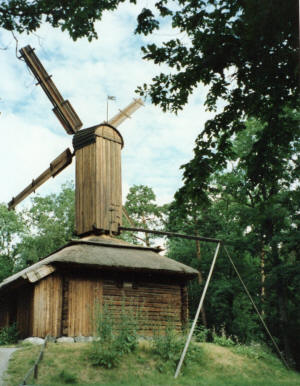 |
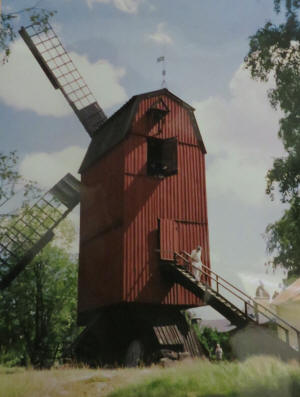 |
The visits started at Skansen, the open-air
buildings museum in Stockholm, which has 3 preserved
mills. They include this hollow post mill (far
left), where the upright shaft passes through the
main post.
Also in the Stockholm area the group visited several
more mills including a large post mill at Lidingö
(right), where the
access steps are built on top of the tail pole.
|
|
On Åland the group visited the Jan Karlsgården
open-air museum, which has several mills including 3
windmills on a ridge, two with very long tail poles,
and a small watermill with a horizontal Norse-type
wheel and a thatched roof (right). |
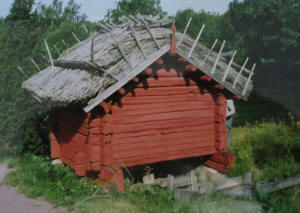
|
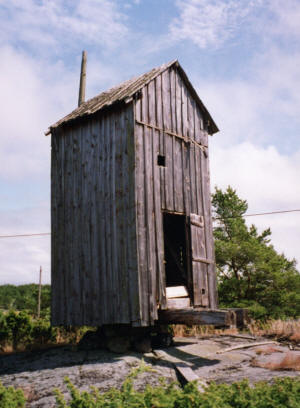 |
On the smaller island of Enklinge, with 8 mills in
various states of dereliction, was this sunken post
mill (left), with the
post firmly fixed in a huge granite outcrop.
In Gotland, another open-air museum at Bunge had
several windmills including this 6-sailed triangular
sawmill (below left), where the whole body of the
mill rotated at ground level, and a beautiful
8-sided windmill built in log-cabin style with
overlapping corner joints (below right), a rare
example built in 1794 and of a design only found in
southern Gotland.
|
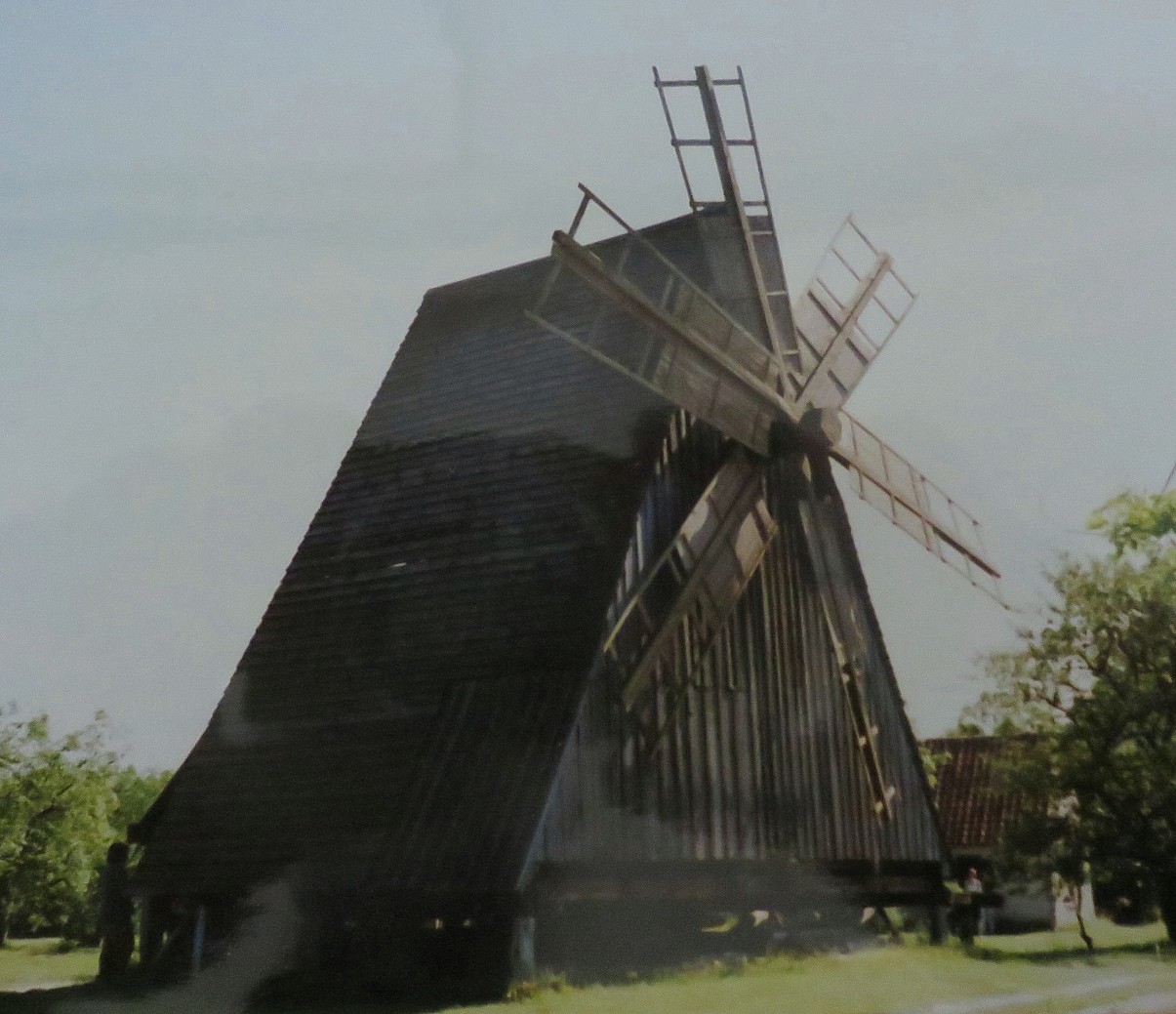 |
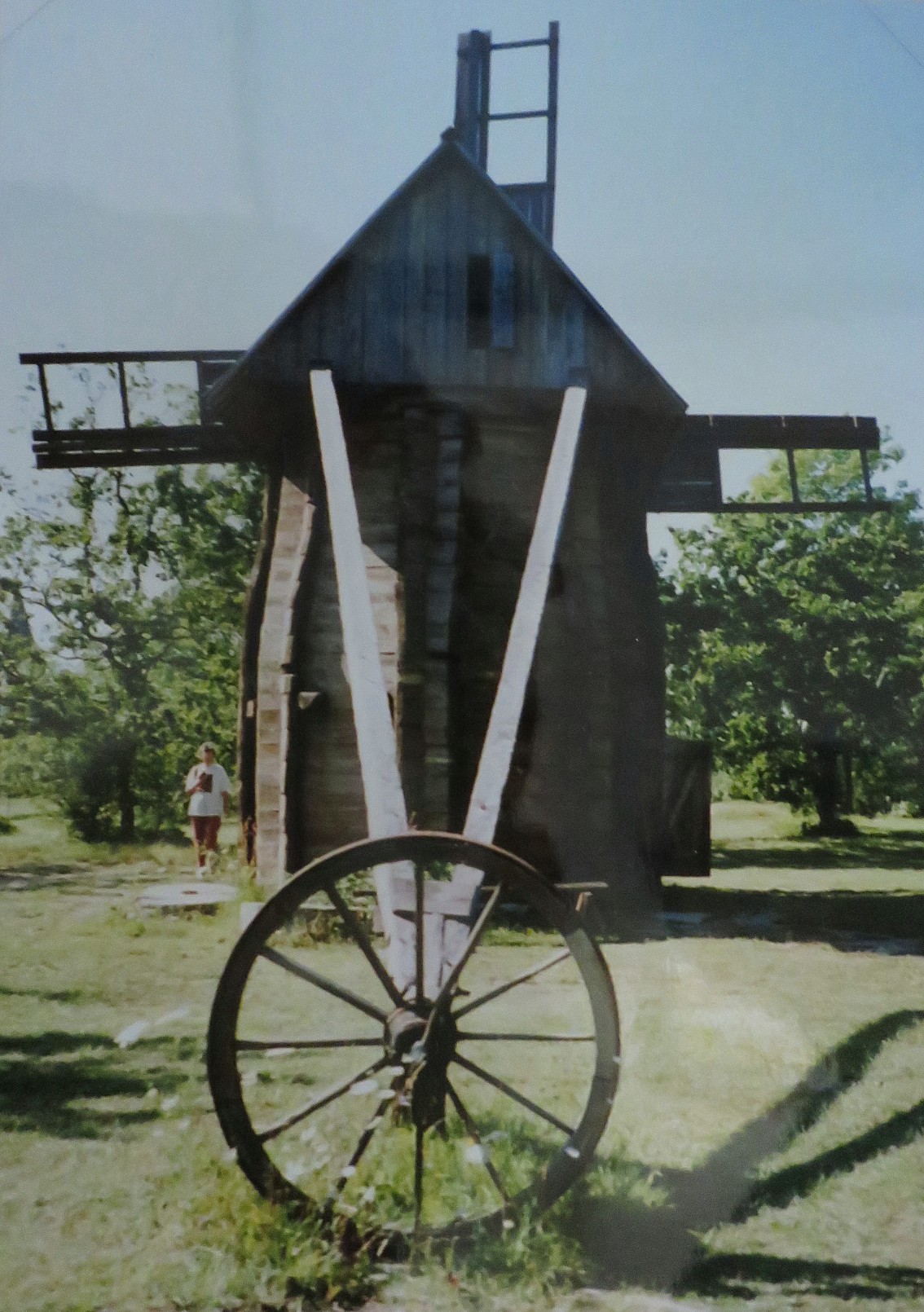 |
|
At Slite the 3-story stone tower mill has a shingled
roof and a braced tailpole.
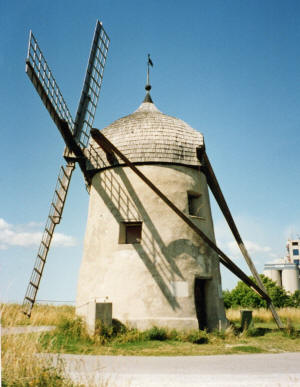
|
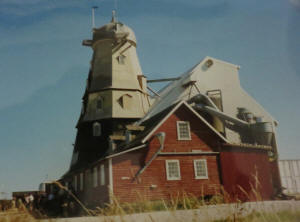
Also on Gotland was Havdhems Kvarn, a giant
smock mill
now incorporated into a large working industrial
milling complex.
|
|
The
following examples illustrate some of the many
different types of mills visited. There are early
sunken post mills, open trestles, hollow post mills,
smock mills, paltrok mills, and tower mills. Some
have 4 sails (the Swedes call them ‘wings’), some 6.
None use shutters or cloth sails, the sail frame is
covered with wooden boards. Most use tail poles for
turning into the wind, the group only saw one
fantail. Practically all the mills had single step
gearing with the cogs of the brake wheel meshing
with the staves of a lantern pinion wallower turning
the upright shaft to power a single pair of stones.
Thank you,
Peter, for an excellent talk.
|
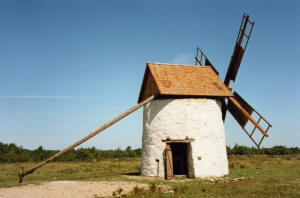
Botsarve |
|
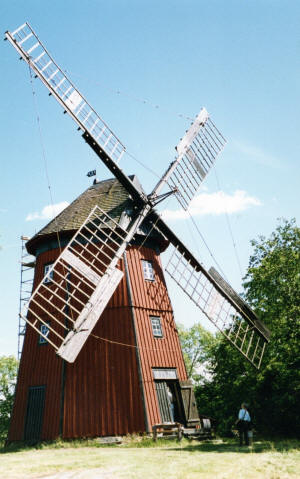
Väsby
|
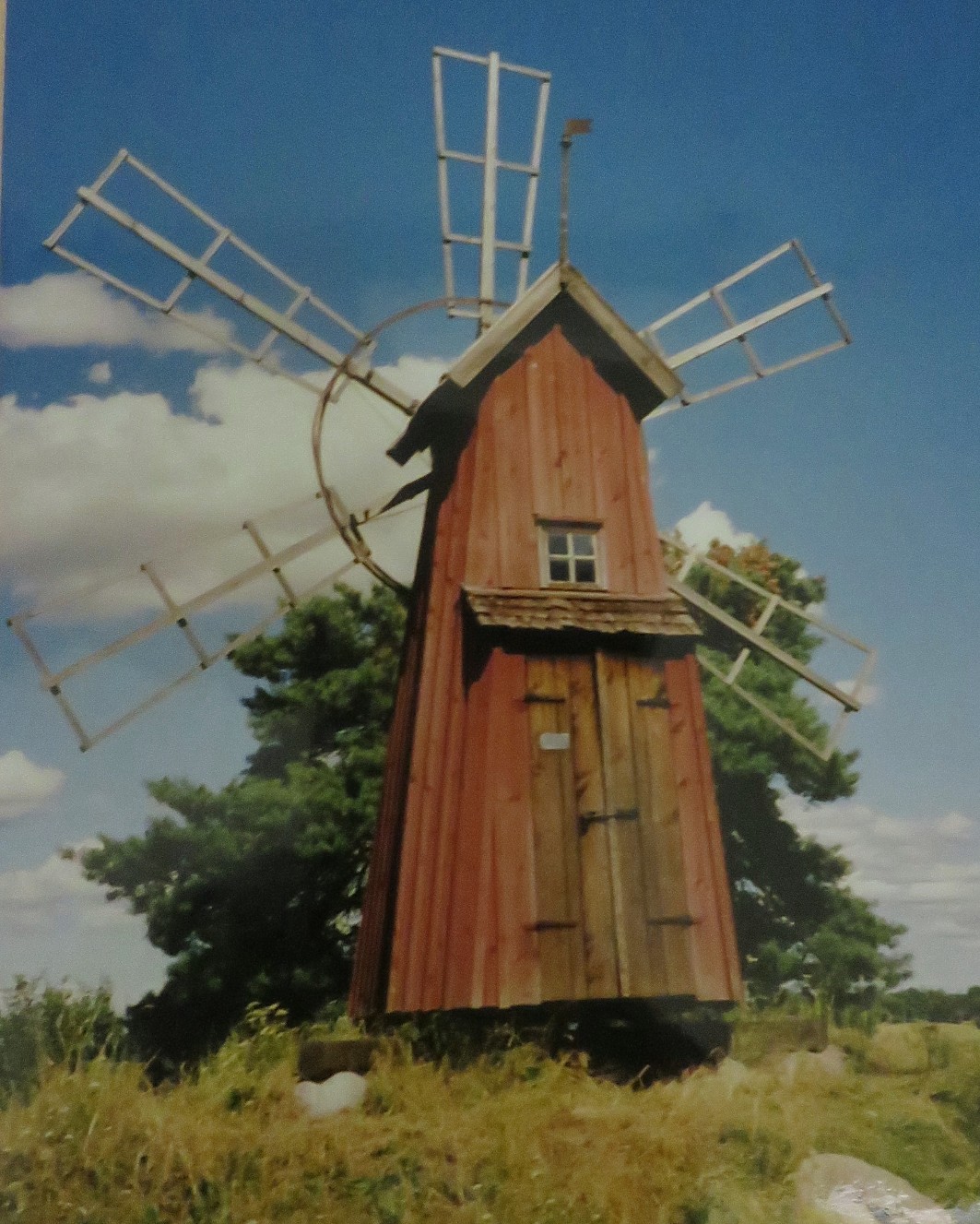
Disabarden,
a paltrok mill
|
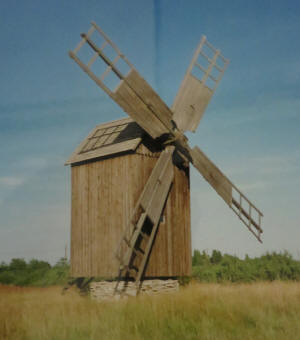
Sandvic, a
sunken post mill |
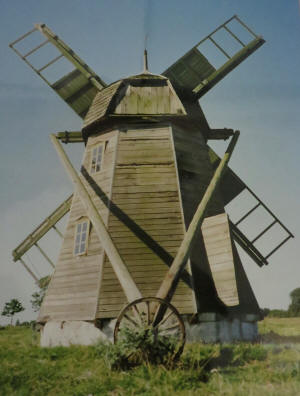
Gullarve |
| |
|
  |
|
|
